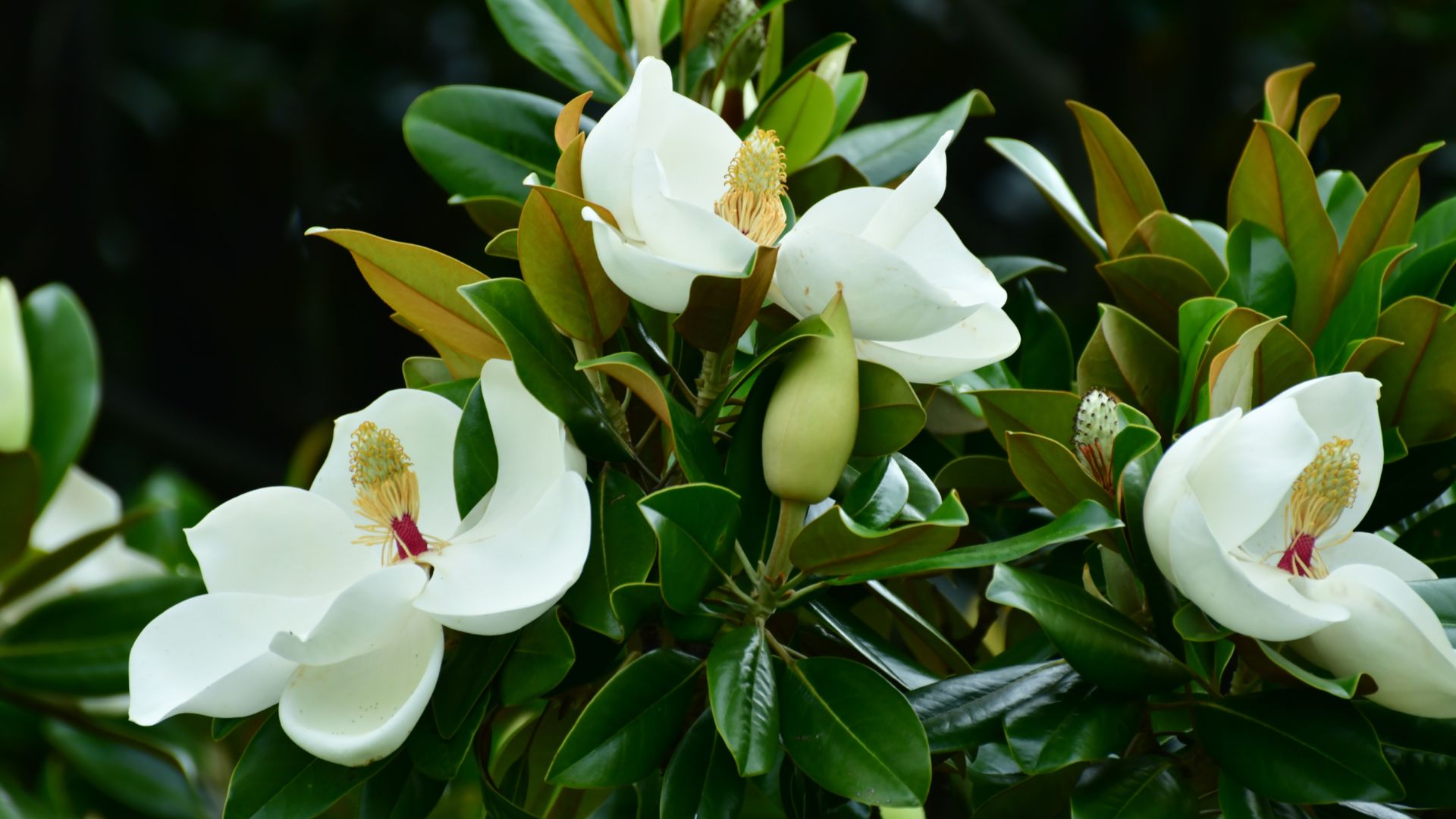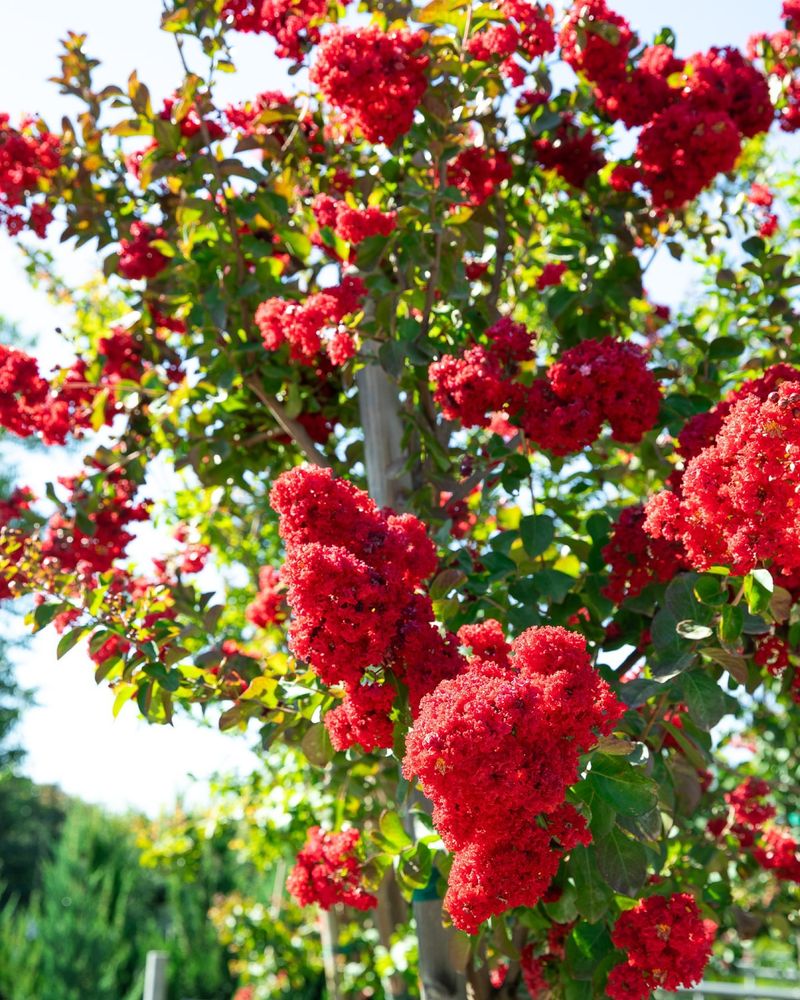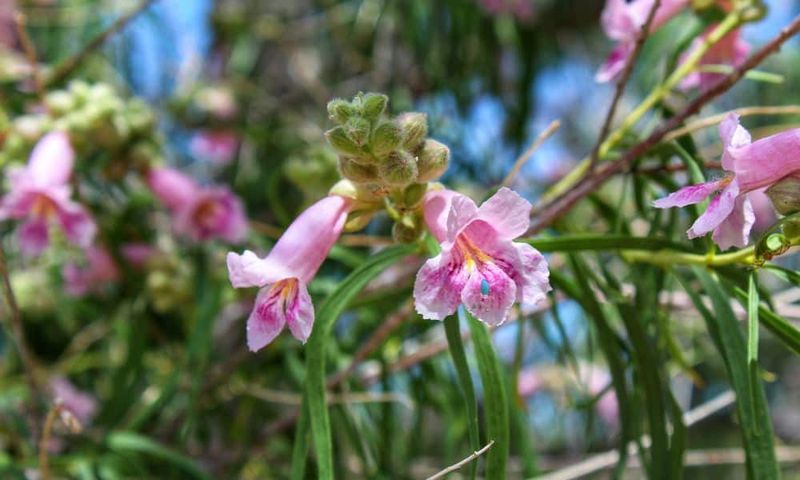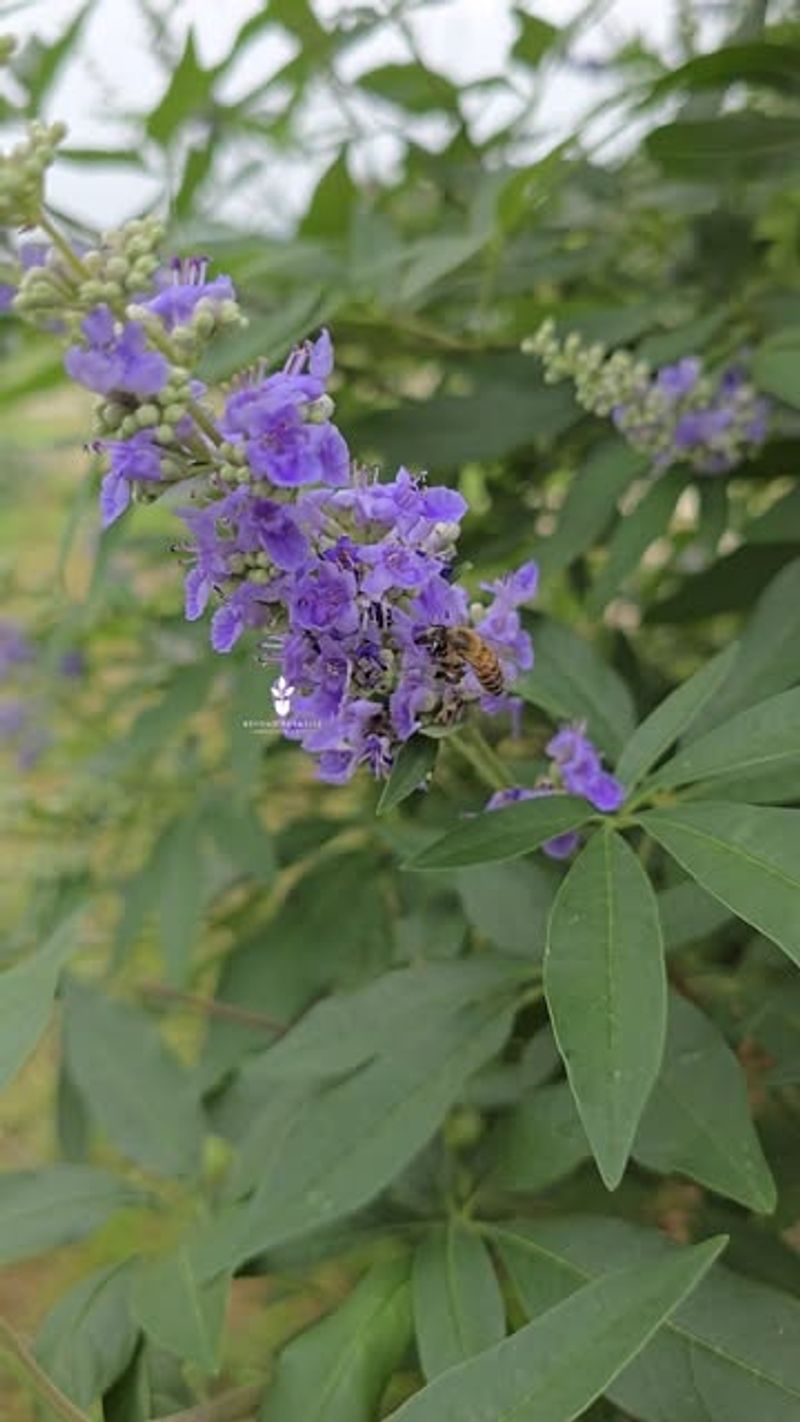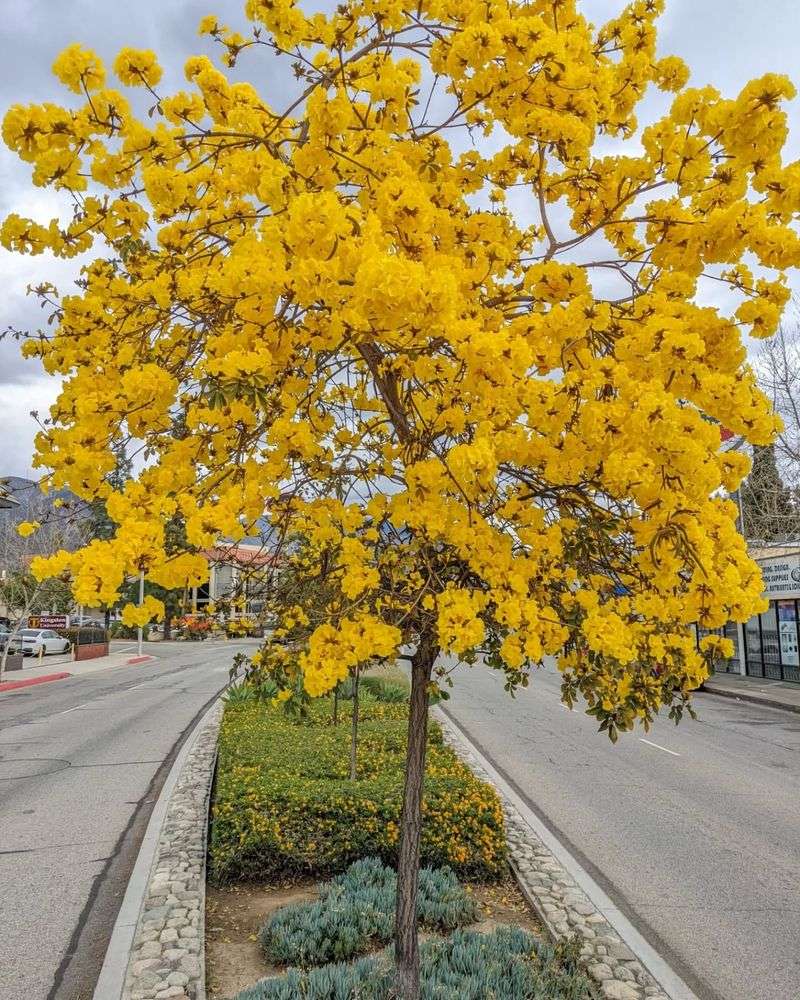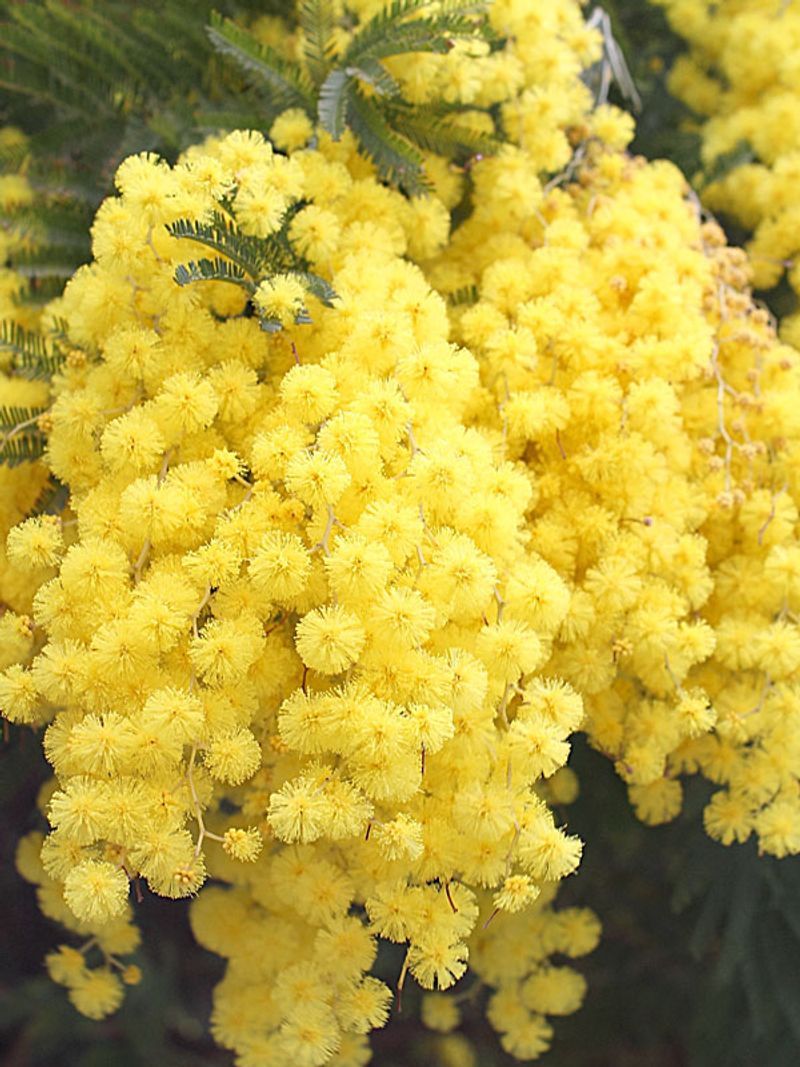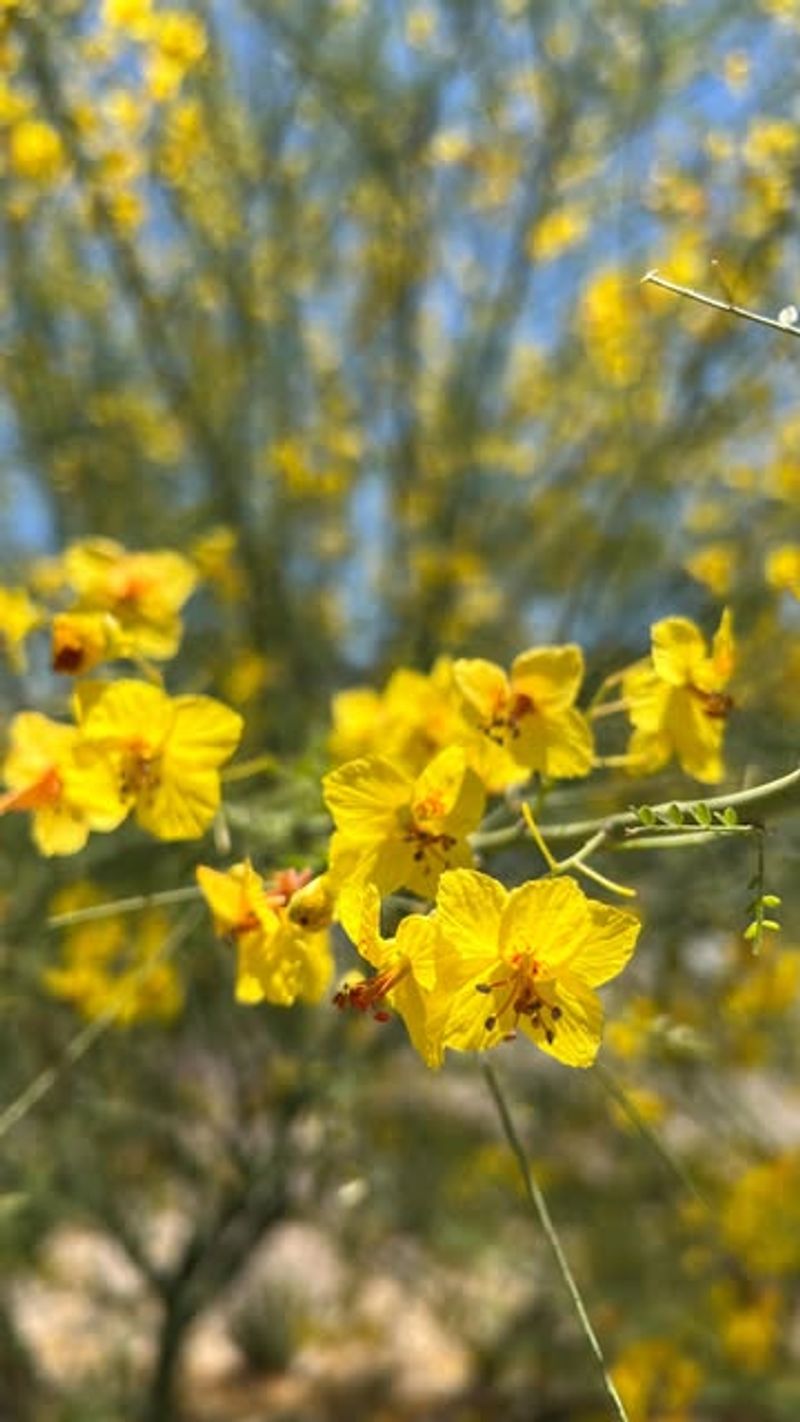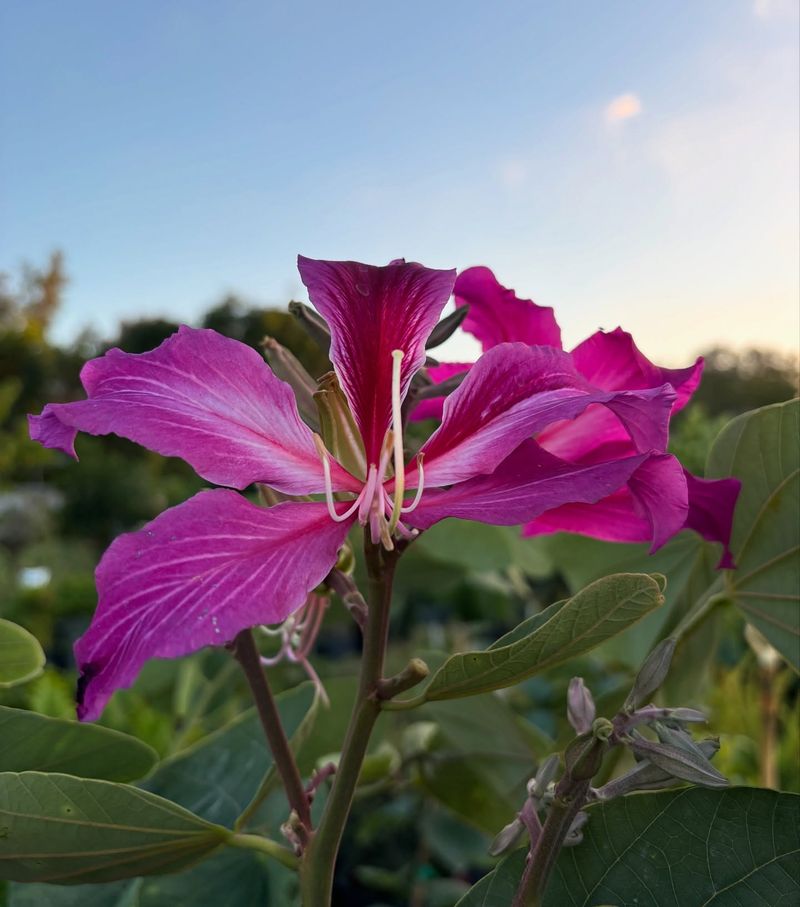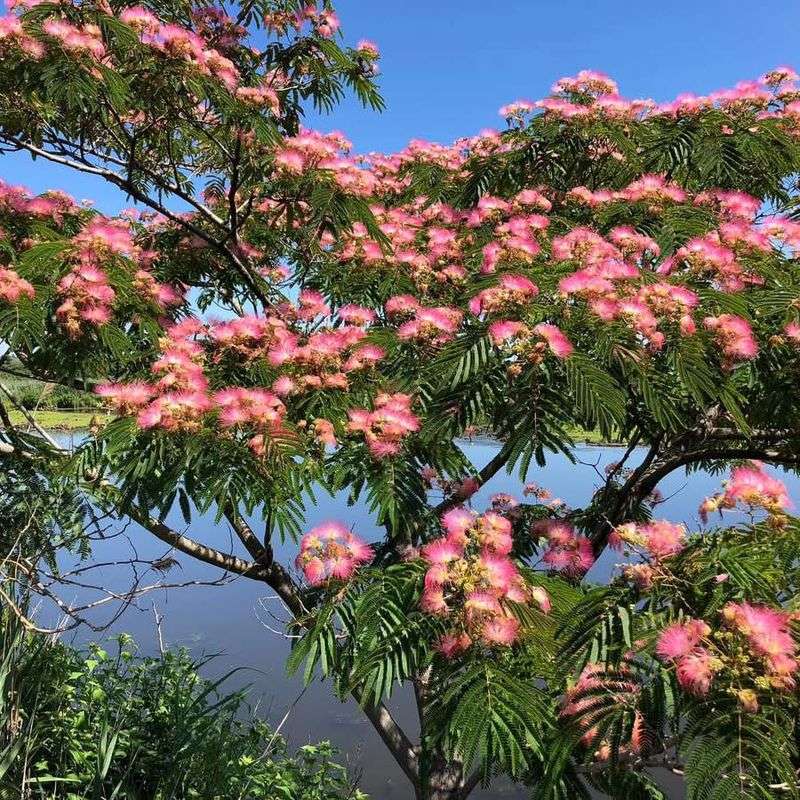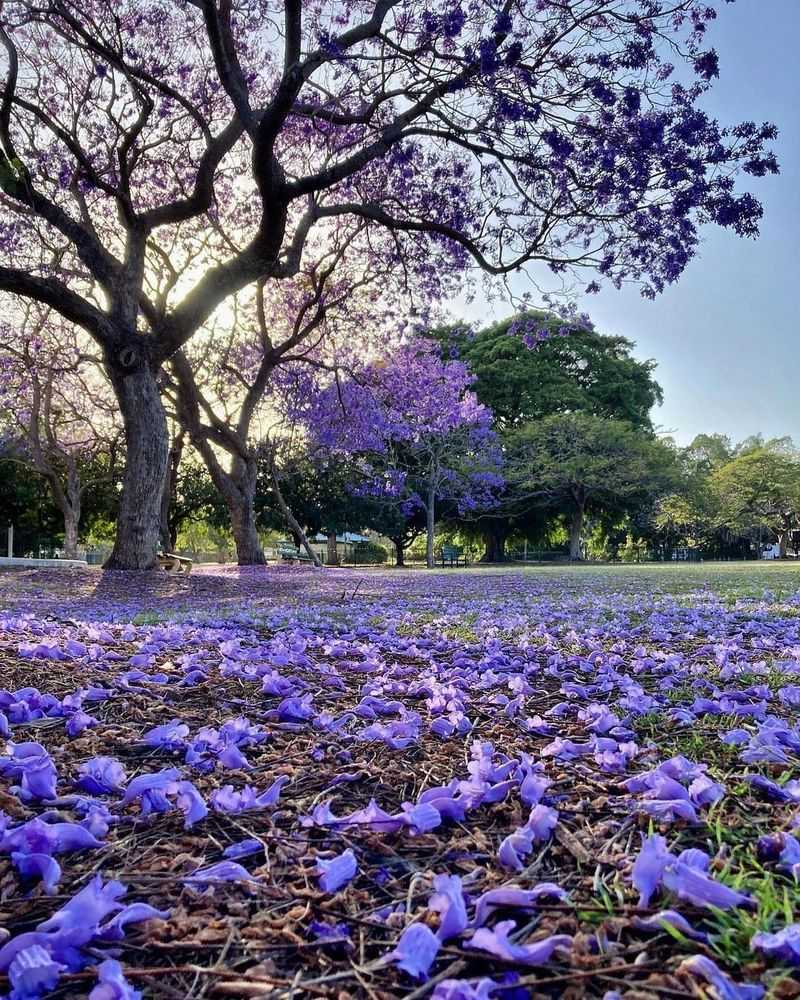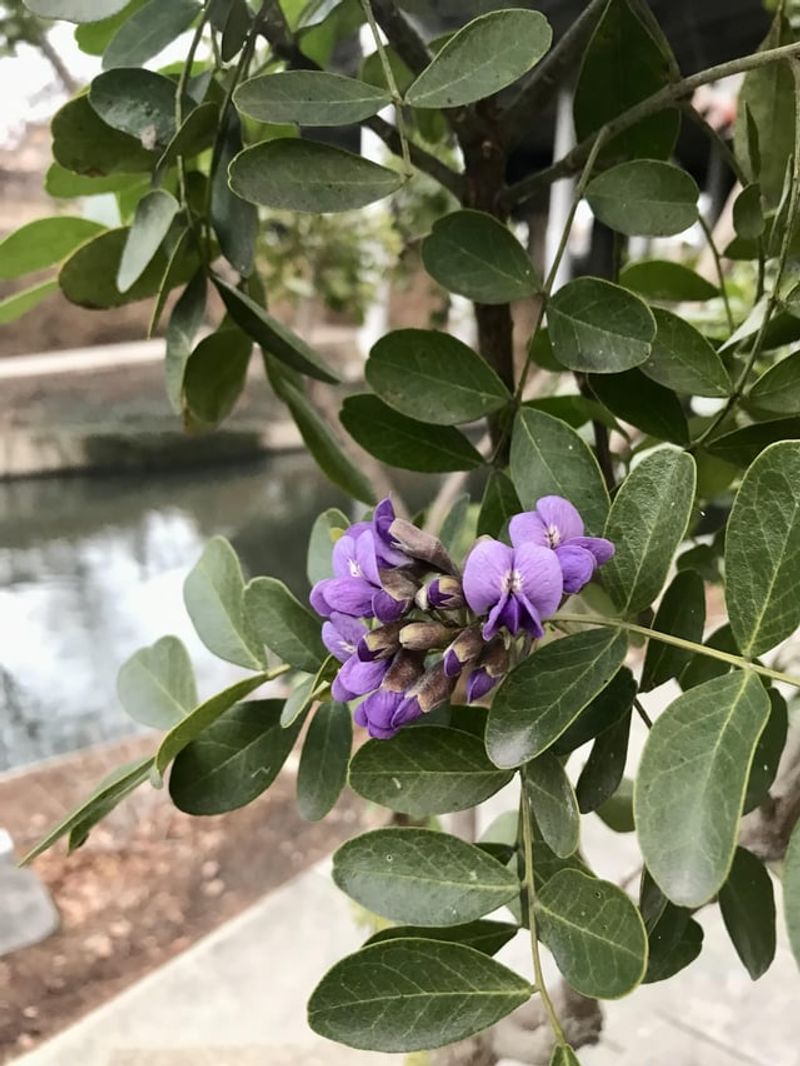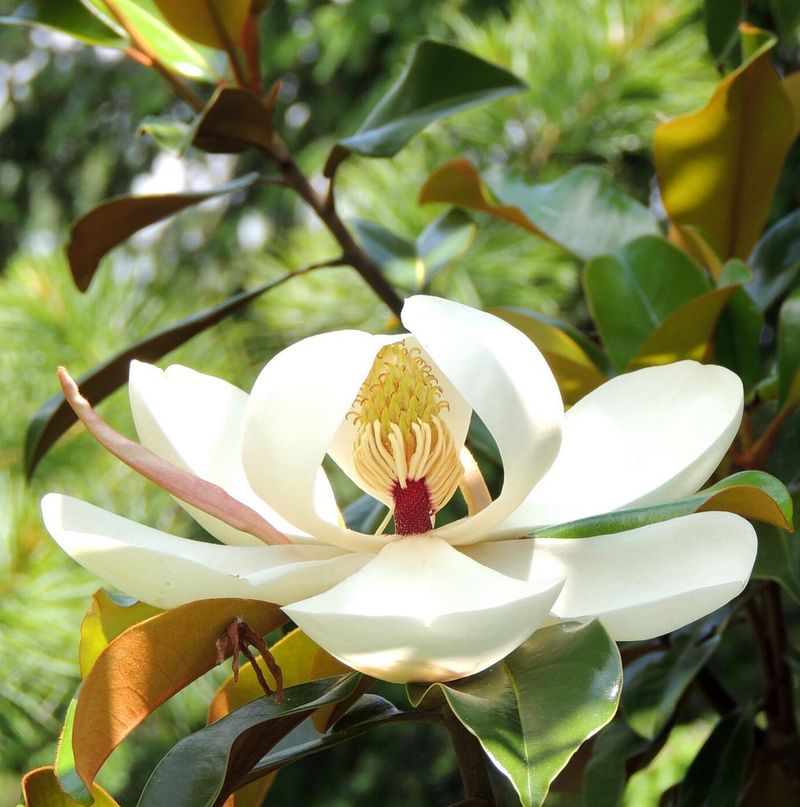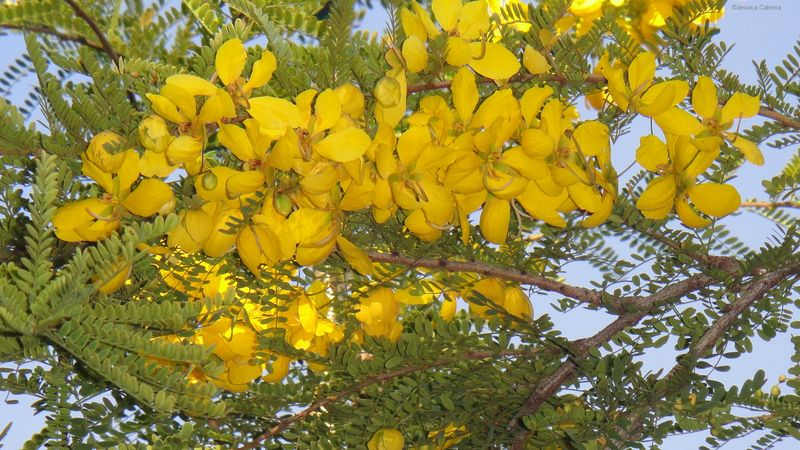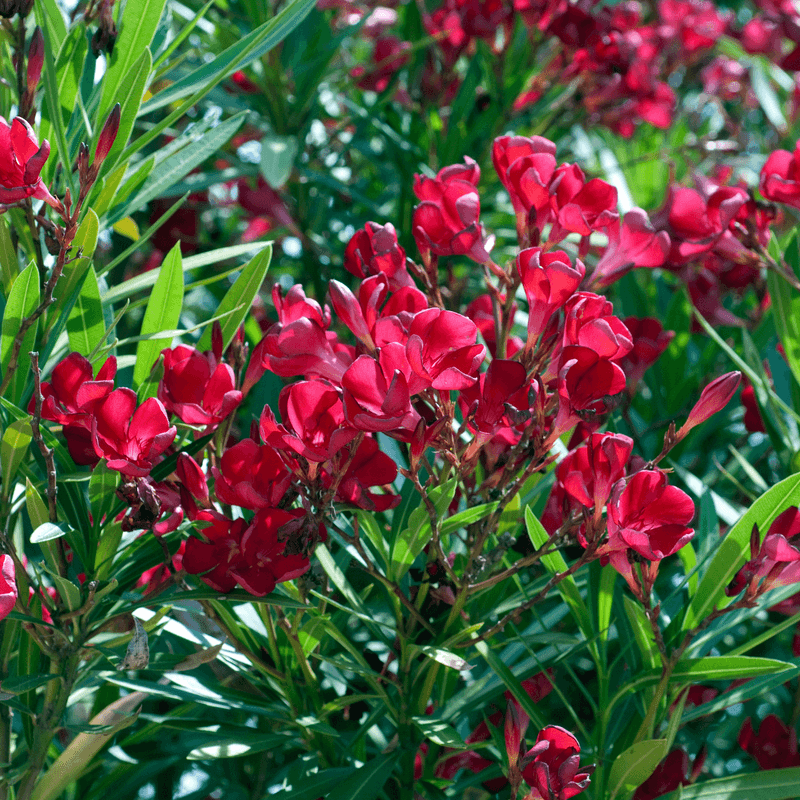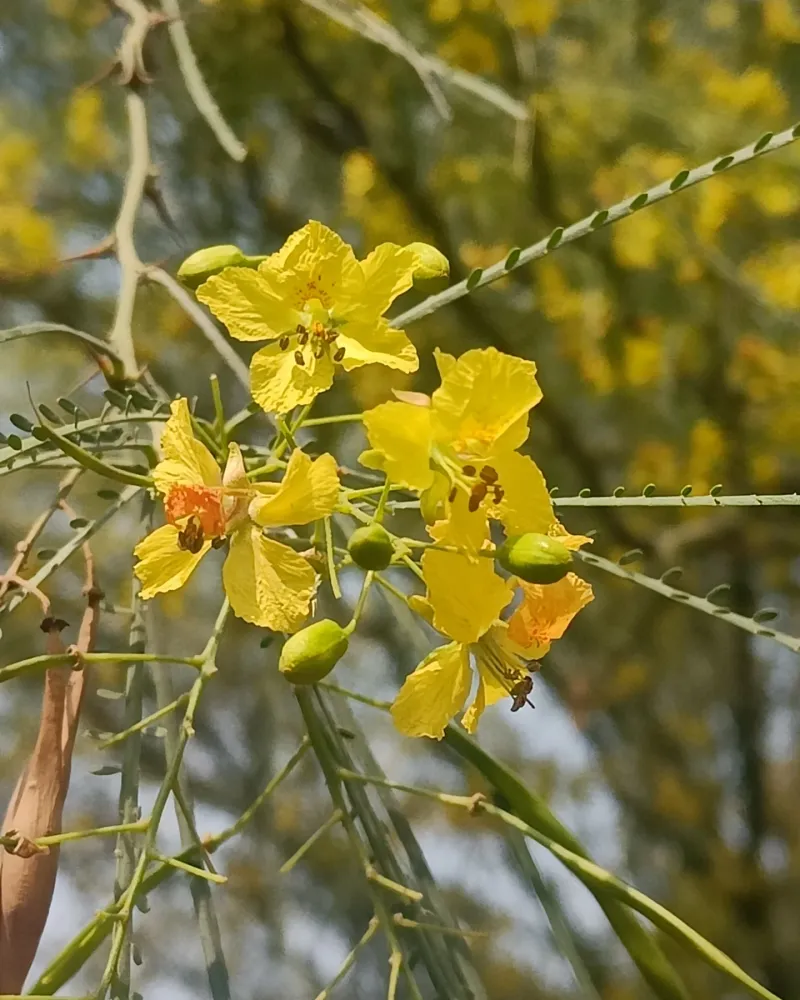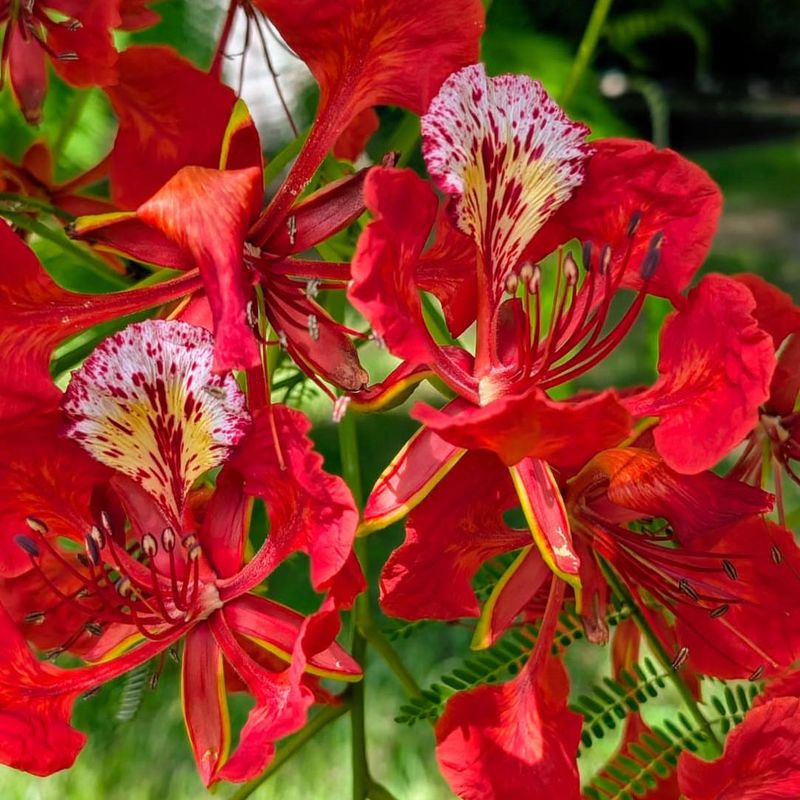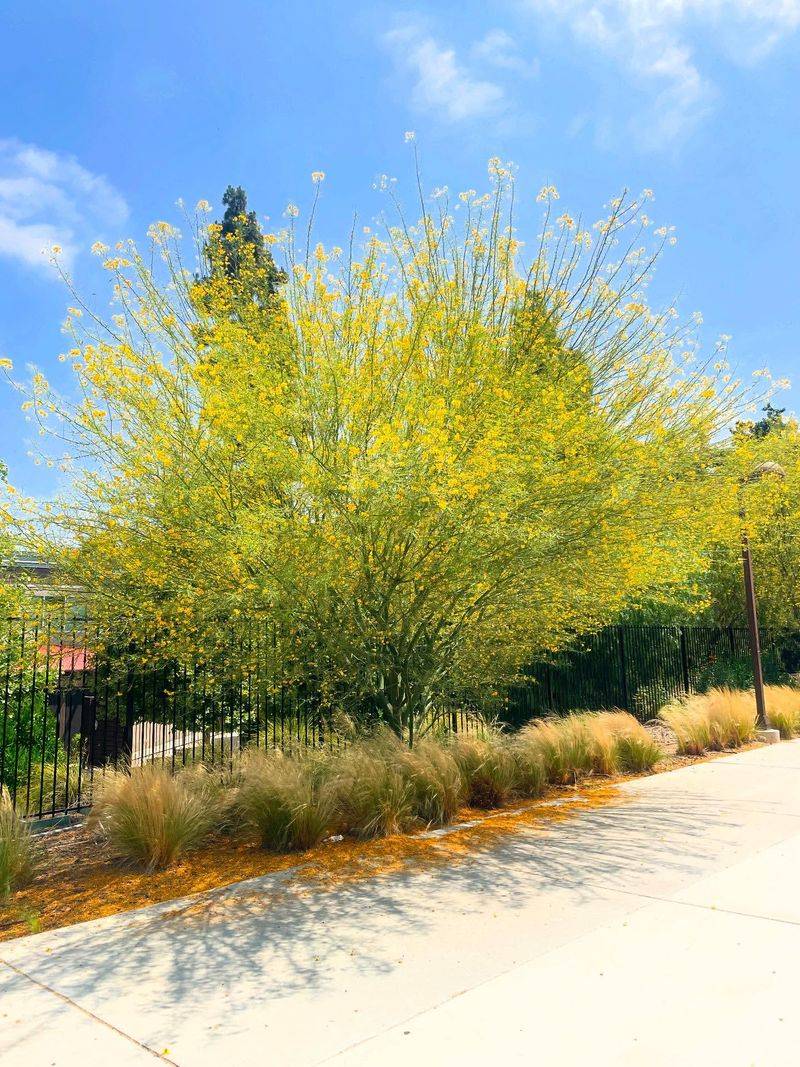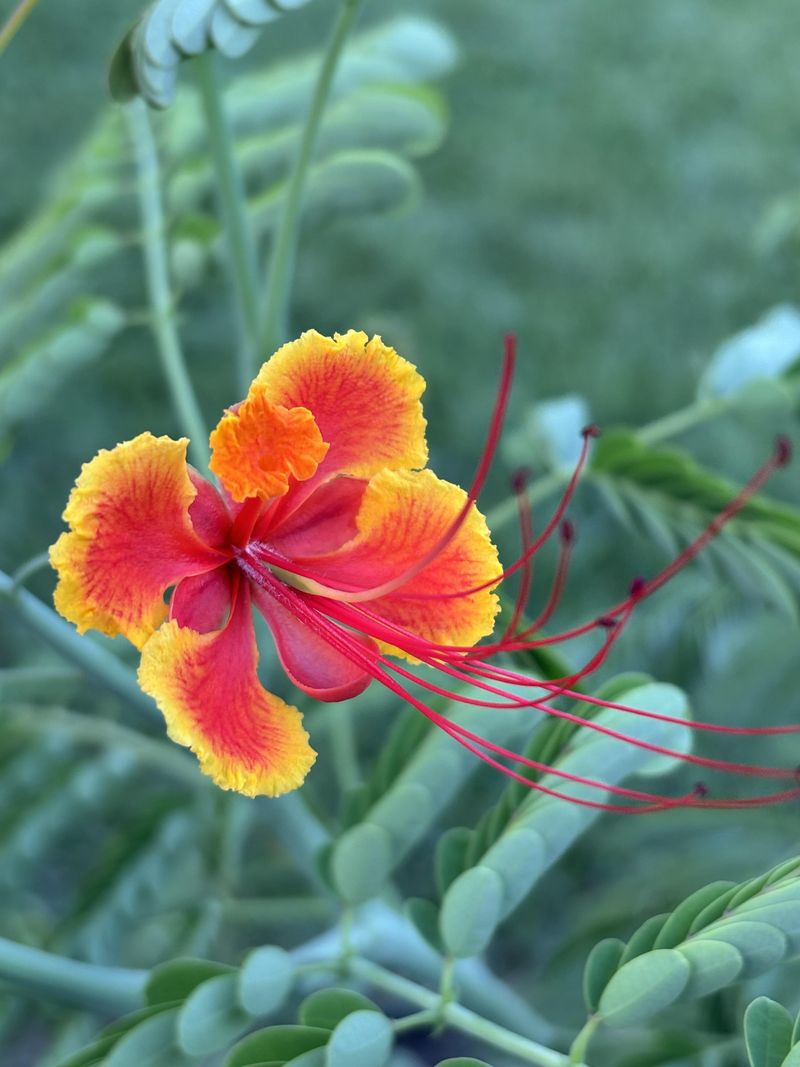When summer heat turns everything crispy and dull, it’s easy to feel like your garden has hit a wall. I’ve watched so many trees drop their blooms the moment things get too hot—frustrating, right? But a few standout flowering trees don’t seem to mind the heat at all.
These tough beauties keep their color going strong, even during the most relentless July afternoons. I started adding them to my yard a few years ago, and they’ve completely changed how my garden looks in late summer. They bring much-needed life when everything else looks ready to give up.
If you’re tired of brown leaves and bare branches by midsummer, it might be time to rethink your tree lineup. These heat-loving bloomers are more than just survivors—they’re summer superstars.
1. Crape Myrtle
Summer heat only seems to encourage these Southern favorites. The papery clusters of flowers appear in early summer and continue well into fall, often lasting 100+ days in warm climates.
I’ve watched my neighbor’s crape myrtle bloom straight through August when temperatures hit triple digits. The tree actually performs better with less watering once established.
While many gardeners prune them severely, a more natural approach allows for better flowering. The late-season blooms often have richer color than the early ones, making for an interesting evolution through the season.
2. Desert Willow
Native to the Southwest, this tough little tree laughs at heat waves while producing trumpet-shaped flowers for months on end. Unlike true willows, it thrives in dry conditions and blooms more profusely in full sun.
The orchid-like blooms appear in late spring and continue intermittently until fall frost. What makes this tree exceptional is how it responds to summer rain—even a brief shower triggers a fresh flush of flowers.
My desert willow became the unexpected star of my garden last August when everything else had given up. Hummingbirds visit constantly, drawn to the tubular flowers long after other nectar sources have disappeared.
3. Chaste Tree
From midsummer through September, spikes of lavender-blue flowers cover this Mediterranean native. The bloom time coincides perfectly with when most other flowering trees have finished their display.
Heat and drought seem to intensify both the color and fragrance of the flowers. After the main flush, deadheading spent blooms encourages a second showing that can last until frost.
Butterflies flock to this tree even during the hottest part of the day. The aromatic leaves remain fresh-looking throughout summer, adding another dimension to its appeal when other plants look heat-stressed and tired.
4. Golden Trumpet Tree
Bright yellow flowers appear in waves throughout the warm season on this Brazilian native. In tropical and subtropical areas, it may bloom nearly year-round, with heaviest flowering during summer heat.
Each bloom cycle lasts about two weeks, with only short pauses between. The tree seems to save its most spectacular displays for when temperatures climb above 90°F—precisely when most other trees shut down flowering.
Growing up in Florida, these trees lined many streets, providing reliable color when the summer heat had most plants looking exhausted. The fallen blossoms create golden carpets beneath the tree, extending the visual impact.
5. Acacia
Many acacia species produce their fluffy yellow flowers for extended periods, especially in hot weather. These drought-adapted trees actually increase flowering during dry spells as a survival strategy.
The sweet fragrance intensifies in the heat, becoming most noticeable in the evening as temperatures begin to cool. Some varieties like Sweet Acacia can bloom intermittently for up to six months in warm climates.
During a particularly brutal summer, my acacia was the only tree in the neighborhood still putting out fresh flowers in August. Its fine, feathery foliage stays green and attractive even when water is scarce, making it doubly valuable in hot weather.
6. Palo Verde
The green-barked desert native puts on a remarkable show of yellow flowers that can last up to eight weeks in spring, often continuing into early summer heat. Unlike many flowering trees, it’s evolved specifically for hot, dry conditions.
Even after the main bloom period ends, sporadic flowers continue to appear throughout summer. The tree’s green bark performs photosynthesis when leaves drop during drought, allowing it to conserve energy while still producing flowers.
Walking through Arizona neighborhoods in July, I noticed these trees still sporting scattered blooms when temperatures regularly exceeded 100°F. Their ability to flower during extreme heat makes them invaluable in desert landscapes.
7. Hong Kong Orchid Tree
Orchid-like flowers in shades of purple, pink, and magenta appear in waves from late winter through summer on this Asian beauty. Unlike other orchid trees that bloom briefly, this variety produces flowers over many months.
The unusual five-petaled blooms measure up to 6 inches across and appear in successive flushes rather than all at once. This staggered blooming strategy ensures flowers are present almost continuously for 6-8 months.
During a vacation in Southern California, I was surprised to see these trees flowering abundantly in August. The lack of seed production (most are sterile) redirects energy into extended flowering, giving gardeners months of color instead of messy seed pods.
8. Mimosa/Silk Tree
Fluffy pink powder-puff flowers adorn this graceful tree from early summer well into fall in most climates. The delicate-looking blooms are surprisingly heat-resistant and continue to open even during hot spells.
Each individual flower cluster lasts about two weeks, but they appear in succession over a 2-3 month period. The fernlike foliage closes up during the hottest part of the day, conserving moisture while protecting the developing flower buds.
My grandmother’s mimosa was always the last tree blooming in her garden, often producing flowers into September. The sweet fragrance is strongest in the evening, creating a pleasant atmosphere for outdoor summer gatherings when it’s finally cool enough to sit outside.
9. Jacaranda
Famous for their lavender-blue flowers, jacarandas typically bloom for 2 months in spring, but many gardeners don’t realize they often produce a second, lighter show in fall. The trumpet-shaped blooms create a spectacular canopy effect.
In warmer regions with mild winters, some trees flower sporadically year-round. The fallen petals create a purple carpet that extends the visual impact of the bloom season.
During a particularly warm year, my neighbor’s jacaranda produced flowers from May through October with only brief pauses. While the spring display is always heaviest, the late-season blooms seem to hold on longer, perhaps due to less competition from other flowering plants.
10. Texas Mountain Laurel
Grape-scented purple flower clusters appear in spring and often return for an encore in late summer when temperatures are highest. This native Texas tree has evolved to handle extreme heat while continuing to produce its showy blooms.
The second bloom period isn’t as heavy as the spring show but lasts longer, sometimes continuing for 6-8 weeks. The evergreen foliage looks fresh year-round, providing a nice backdrop for the flowers whenever they appear.
Last summer, when temperatures hadn’t dropped below 95°F for weeks, I was amazed to see fresh flowers developing on these trees. Their ability to bloom during extreme heat makes them especially valuable in hot-summer landscapes where few other trees flower in late season.
11. Southern Magnolia
Those massive white flowers don’t all appear at once—they emerge in waves from late spring through early fall. The staggered blooming pattern means you’ll have flowers for months rather than weeks.
Each individual bloom lasts only a few days but makes a dramatic statement with dinner-plate size and powerful fragrance. The glossy evergreen leaves provide year-round structure and beauty between flowering periods.
During a visit to Georgia in August, I was surprised to see magnolias still producing fresh flowers. Though most people associate them with spring, these trees quietly continue flowering through summer heat, with each bloom becoming an event due to its size and scent.
12. Desert Cassia
Yellow flowers cover this drought-loving tree from mid-summer through fall, precisely when most other trees have finished blooming. The hotter and sunnier the weather, the more abundant the flowers become.
Rain triggers explosive blooming episodes, but even without precipitation, the flowers continue to appear steadily. The feathery foliage remains attractive between blooms, giving the tree year-round appeal.
I’ve noticed the flowers seem to last longer during hot spells than during cooler periods. This counter-intuitive response to heat makes desert cassia especially valuable in southern gardens where summer temperatures regularly exceed 100°F and most other flowering trees have long since quit.
13. Oleander Tree
Often grown as a shrub but easily trained into a small tree, oleander produces clusters of pink, red, or white flowers continuously from spring until frost. Even during triple-digit temperatures, the blooms keep coming without pause.
The glossy leaves remain fresh-looking through heat and drought, making this Mediterranean native doubly valuable in hot climates. Each flower cluster lasts about two weeks, with new ones constantly developing to replace the old.
During a record-breaking heat wave last summer, my oleander was the only thing in the garden that didn’t skip a beat. Though toxic if ingested, its ability to flower nonstop through extreme heat makes it worth considering for hot, challenging locations where other trees struggle.
14. Jerusalem Thorn
Bright yellow flowers appear in waves throughout the warm season on this thorny but beautiful tree. Native to arid regions, it’s programmed to bloom during the hottest months when other trees conserve energy.
The pea-like flowers cover the weeping branches from May through September in most climates. After each flush of blooms fades, another quickly develops, ensuring nearly continuous color through summer.
A friend in Arizona has one that flowers straight through summer without irrigation. The tree’s bluish-green bark and zigzag branches add visual interest between flowering periods, making it ornamental even when not in bloom.
15. Flamboyant Tree
Also called Royal Poinciana, this tropical beauty produces massive displays of flame-orange flowers for up to four months in summer. The hotter the weather, the more profusely it blooms.
Individual flowers last only a few days, but they’re produced in such abundance that the tree remains colorful throughout the blooming period. The fernlike foliage creates a perfect backdrop for the vibrant flowers.
During a Caribbean vacation, I was amazed to see these trees in full bloom despite temperatures consistently in the 90s. In the hottest regions, they’re often the only trees flowering abundantly in July and August, creating oases of color when the landscape otherwise looks heat-stressed.
16. Tipu Tree
Golden-yellow flowers appear in late spring and continue sporadically through summer on this fast-growing tree. Unlike many flowering trees that bloom once and quit, tipu produces waves of flowers over many months.
The orchid-like blooms drop and create a golden carpet beneath the tree, extending the ornamental effect. After the main flush, smaller blooming episodes continue to occur whenever temperatures rise.
I first noticed this tree during a July visit to Southern California, where it was flowering abundantly despite the heat. Its ability to grow quickly while continuing to flower in hot weather makes it especially valuable for establishing shade and color in new landscapes.
17. Pride Of Barbados
Technically a large shrub but easily trained as a small tree, this Caribbean native produces flamboyant orange-red flower clusters continuously from late spring until frost. The hotter the weather gets, the more it seems to bloom.
Each flower spike lasts about two weeks, with new ones constantly developing. The fern-like foliage stays fresh-looking even during drought, making this plant doubly valuable during heat waves.
During last summer’s record temperatures, my specimen never stopped flowering even when I reduced watering. Few trees can match its combination of drought tolerance, heat resistance, and non-stop blooming from May through October—making it the ultimate choice for extending color through the hottest months.

